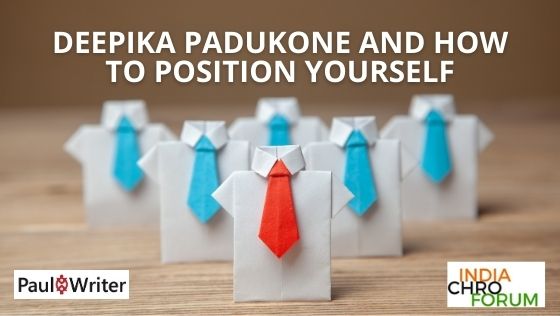
Amongst the raft of celebrities that are showing their love of ripped jeans, Deepika is a notable absentee. Frequently photographed in jeans with bits missing, she is a Levi’s brand ambassador which makes her silence quite interesting. I think it’s cool and smart – both of her and Levis – to not join the tweet storm. They understand that their buying audience isn’t on Twitter all day, and that its better to stick to their er, weaving. Jeans have been protest content forever – indigo imports were banned in Europe in the 1500s, and Martin Luther King and supporters wore them during the Civil Rights Movement – and Levis might have decided that the outfit will survive without their support. But the point is not talking about everything is actually efficient marketing.
Let’s look at this in the context of your resume. It is tempting to put in every job you’ve ever done and that kindergarten graduation certificate into it. But is it relevant? Does it answer the question of why they should hire you (and not the others)? So if you’re applying for a CMO job, isn’t it better to put in 100 words what in your background or experience makes you a great fit? It’s ironic that the fact that you have so much to offer could actually be stopping you from getting shortlisted.
I see myself as a marketer, yes, and have done pretty much every part of that function, from writing press releases to logo design to putting up a booth, but the piece that I really enjoy is positioning and developing a go to market strategy built on that positioning. So in most cases it would make sense for me to lead with that rather than discuss how my first job as an agency rookie was managing 3 BTL chai brands for Unilever. I’m a work in progress on this too, but recently did reduce the length of my profile on LinkedIn.
Coming back to Deepika, I’m pretty sure she (or her agent) does not have a standard pitch or proposal for every client. What she says when angling for a movie vs an endorsement would be quite different. And that’s how your resume should be too. It makes sense to custom-craft it for each role you apply for. When I think of the huge number of communication channels brands use these days and then look at the resume process, it seems positively ancient. But even within the constraint of a document much can be done to make the content compelling.
What about brands? Burger King got into a spot of bother tweeting about how “Women’s Place Was In the Kitchen” – they were recruiting female chefs, but the “teaser” did not go down well. First of all, a teaser is an arrogant marketing tool (but that’s a story for another day or a Clubhouse chat), and second of all, the theme didn’t tie into their brand positioning and wasn’t something they should have gone all edgy about.
Staying silent is as much a strategy as talking.
It’s important that brands map out the positioning for each product and target audience they wish to approach. And be super clear about why that audience should choose them over the other options. Then they can assess each opportunity to talk – or stay silent – against this position.
During my consulting engagements we often debate the AND ie positioning statements that people buy this product because of this and that and also this other thing and this offer. Each “and” costs money because you have to put marketing heft in substantiating and communicating it. The simpler the “reason to choose” the easier -and cheaper – it is to communicate and reinforce. For an individual, “getting things done” is a clearer value proposition than “strategic thinker and execution oriented and great at client engagement and excel geek”. For a business “Proven to improve NPS” is more impactful than “Helps drive a better customer experience and brings industry leading research and manufactures sustainably”. I don’t mean that we shouldn’t talk about all the positive attributes, but that we need clarity on what’s the headline and which bits are the supporting body copy. It would vary as per market and target audience, and hence the need for customization.
My book manuscript is finally with the publisher! Yay! This is an updated take on No Money Marketing being published by Bloomsbury. I wrote my first book on marketing in 2009, and when I think back, one of my motivations was certainly linked to identity. I did not want to have to describe myself in terms of who I worked for and “Author” is a headline I’m happy with.